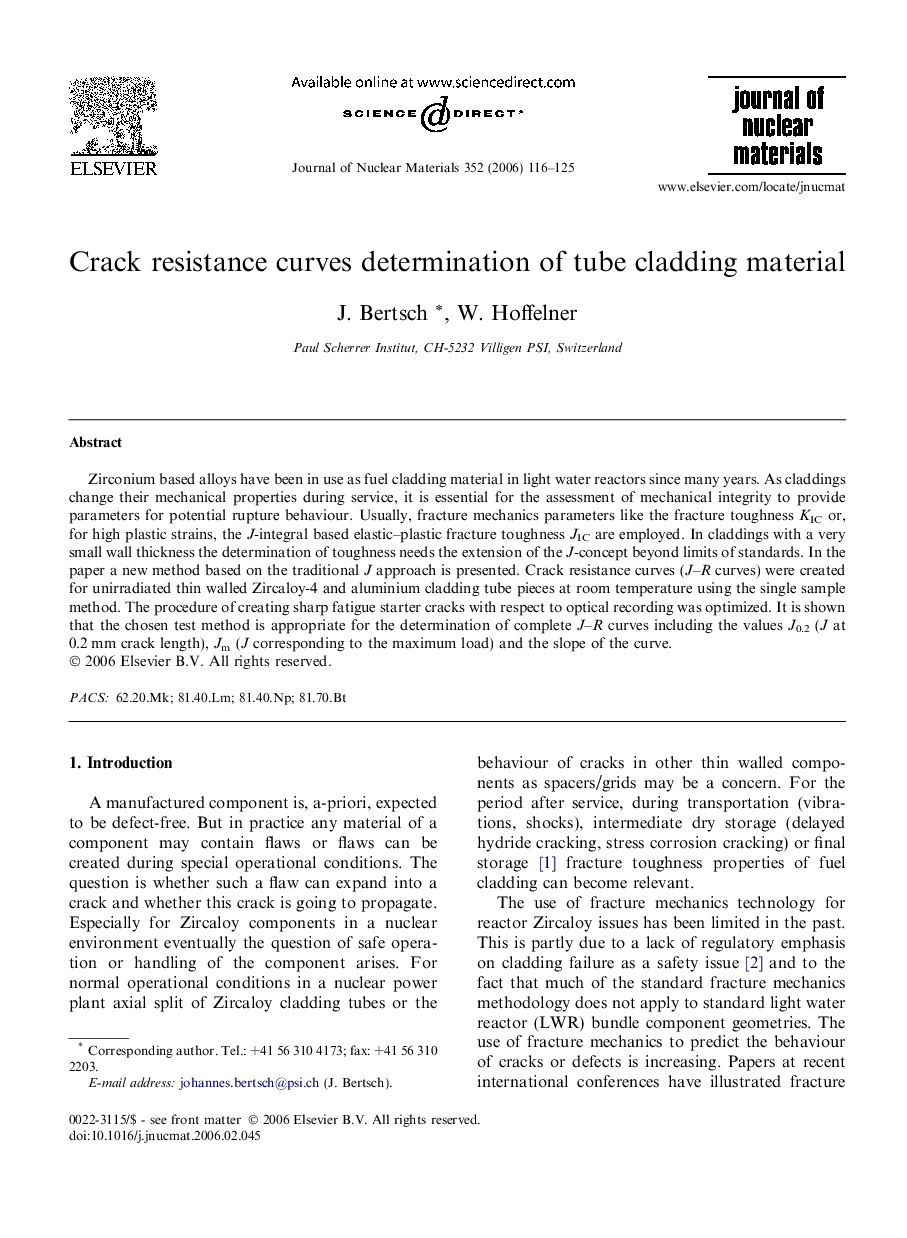| Article ID | Journal | Published Year | Pages | File Type |
|---|---|---|---|---|
| 1570008 | Journal of Nuclear Materials | 2006 | 10 Pages |
Zirconium based alloys have been in use as fuel cladding material in light water reactors since many years. As claddings change their mechanical properties during service, it is essential for the assessment of mechanical integrity to provide parameters for potential rupture behaviour. Usually, fracture mechanics parameters like the fracture toughness KIC or, for high plastic strains, the J-integral based elastic–plastic fracture toughness JIC are employed. In claddings with a very small wall thickness the determination of toughness needs the extension of the J-concept beyond limits of standards. In the paper a new method based on the traditional J approach is presented. Crack resistance curves (J–R curves) were created for unirradiated thin walled Zircaloy-4 and aluminium cladding tube pieces at room temperature using the single sample method. The procedure of creating sharp fatigue starter cracks with respect to optical recording was optimized. It is shown that the chosen test method is appropriate for the determination of complete J–R curves including the values J0.2 (J at 0.2 mm crack length), Jm (J corresponding to the maximum load) and the slope of the curve.
